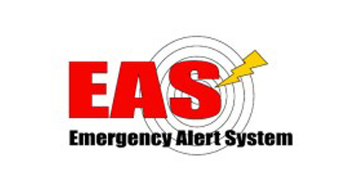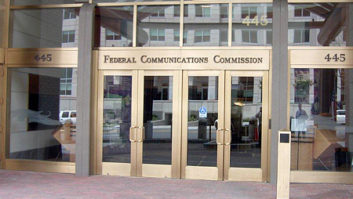In recent weeks, Radio World has continuously reported on the new FCC mandate that requires EAS participants to comply with its recent report and order on the clarity and accessibility of EAS messages.
Here, Sara Hinkle, an attorney with Fletcher Heald & Hildreth, takes a deeper dive into what that means. This story originally appeared on CommLawBlog.
The Federal Communications Commission (FCC) recently adopted modifications to the requirements for the Emergency Alert System (EAS), and the new rules will go into effect on December 12, 2022. Fortunately, however, EAS participants, which include most radio and television stations, have one year, until December 12, 2023, in which to make the necessary changes to their EAS equipment in order to comply with the new rules. The FCC believes that the rule modifications will result in both greater use of IP-based Common Alerting Protocol (CAP) format alerts and more understandable and informative messages.
The first change is to require all EAS participants, upon receiving a legacy state or local EAS alert message, to check before broadcasting the alert to determine whether a CAP-formatted EAS message is available. If so, the EAS participant must transmit the CAP version of the alert rather than the legacy EAS version. EAS participants will be familiar with the existing system whereby alerts are relayed from primary stations to secondary stations throughout the EAS network. Additionally, messages also are relayed in the CAP format over FEMA’s internet-based platform known as the Integrated Public Alert and Warning System (“IPAWS”) and are received by periodically checking an internet-connected server in a process known as “polling.”
These messages have the ability to convey a bit more information than the relatively brief voice announcements relayed by the current system, including multilanguage information, picture or video files, and URLs where the public can obtain additional information. A further advantage for the deaf or hard of hearing is that a CAP-formatted alert can display all of the text provided by the alert originator without the limitations of the current alerts. Further, should the alert originator send a CAP-format alert without an audio message, the EAS participant usually is able to generate an audio message by using text-to-speech software installed in its EAS equipment so that the blind and vision-impaired can receive the message.
[Related: “FCC Sets the Deadline for Accessibility Changes to EAS“]
In order to force more use of CAP-format alerts, the new EAS rule requires that participants must delay re-transmitting an alert for at least 10 seconds after receiving the header codes to either allow time for the CAP version to appear and, if not, to poll the IPAWS feed to either find the CAP version or confirm that no matching CAP version of the message is available. As noted above, if the CAP alert does appear or is found, it is that version which must be re-transmitted. The FCC understands that the brief wait for CAP will create slight delay in getting the alert information out to the public but believes that the superior quality of the information, as well as improved availability to the disabled, makes the delay worthwhile. The FCC also said that any receipt and retransmission of alerts will take a bit of time, which it theorizes is at least ten seconds, though results from prior national EAS tests do not necessarily support this idea in full.
These requirements are not applicable, however, to required weekly tests, to national tests of the EAS, or in the event of an actual national emergency message, something which has never happened. The process also will not apply at this time to weather-related alerts issued by the National Weather Service (“NWS”) because the NWS does not distribute alerts in the CAP format over IPAWS due to concerns about issuing duplicative messages for the same event. The FCC is hopeful that the NWS will overcome its concerns and will begin issuing CAP alerts, at which time the new rules will apply to them. Additionally, the new process does apply to required monthly tests.
The second major change is with regard to the event codes and originator code primarily used for national alert messages and nationwide EAS tests. Specifically, the FCC is changing the text for the EAN event code from “Emergency Action Notification” to “National Emergency Message,” is changing the text for the NPT event code from “National Periodic Test” to “Nationwide Test of the Emergency Alert System,” and is changing the text for the PEP originator code from “Primary Entry Code System” to “United States Government.” The thought is that this language will be clearer and will reduce the potential for consumer confusion and alerting fatigue. Of course, one wonders just how much public interest there is in improving test notices for a system used once a year and an alerting system that has not been used – ever. Still, in order to be consistent, the texts of the messages issued for national alerts and nationwide tests as well.
[Sign Up for Radio World’s SmartBrief Newsletter]
Thus, the old message, “The Primary Entry Point system has issued an Emergency Action Notification….” has been changed to “The United States Government has issued a National Emergency Message…,” and the test message, “The Primary Entry Point system has issued a Nationwide Periodic Test,” has been changed to “The United States Government has issued a Nationwide Test of the Emergency Alert System….” Likewise, the visual crawl for EAS-based nationwide test alerts transmitted in legacy format has been slightly modified. Obviously, the visual crawl requirement applies primarily to television stations, but radio stations also are required to use the new text in making announcements. While the text is prescribed, it may be translated to languages other than English.
The good news is that, as noted above, stations have one year in which to come into compliance with the new requirements. Further, it is anticipated that the changes related to event and originator codes can be accomplished through an EAS equipment software change. Likewise, EAS equipment manufacturers have indicated that they either have made or can make automated IPAWS polling features available on EAS devices in the coming year. In something of a leap of logic, the FCC concluded that because a one-year implementation period has worked in the past, it will work again for the new changes. It also has determined that that costs, which it estimates to be no more than $5 million for all participants, is outweighed by the benefits of improved clarity and availability of alerts. Part of that conclusion is based on the ability simply to download software changes, which should be able to be done in conjunction with general software upgrades.











